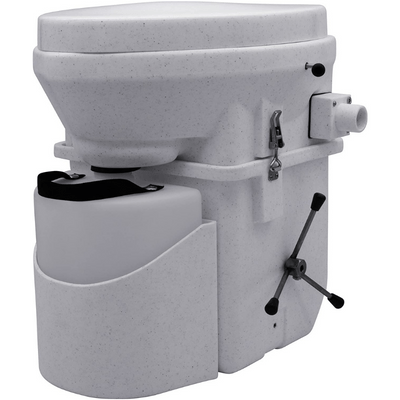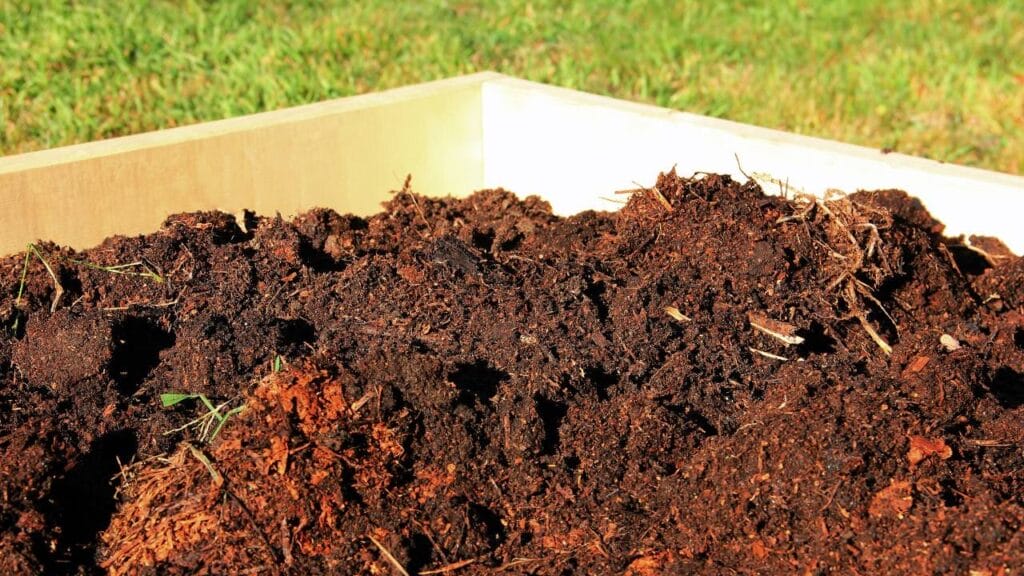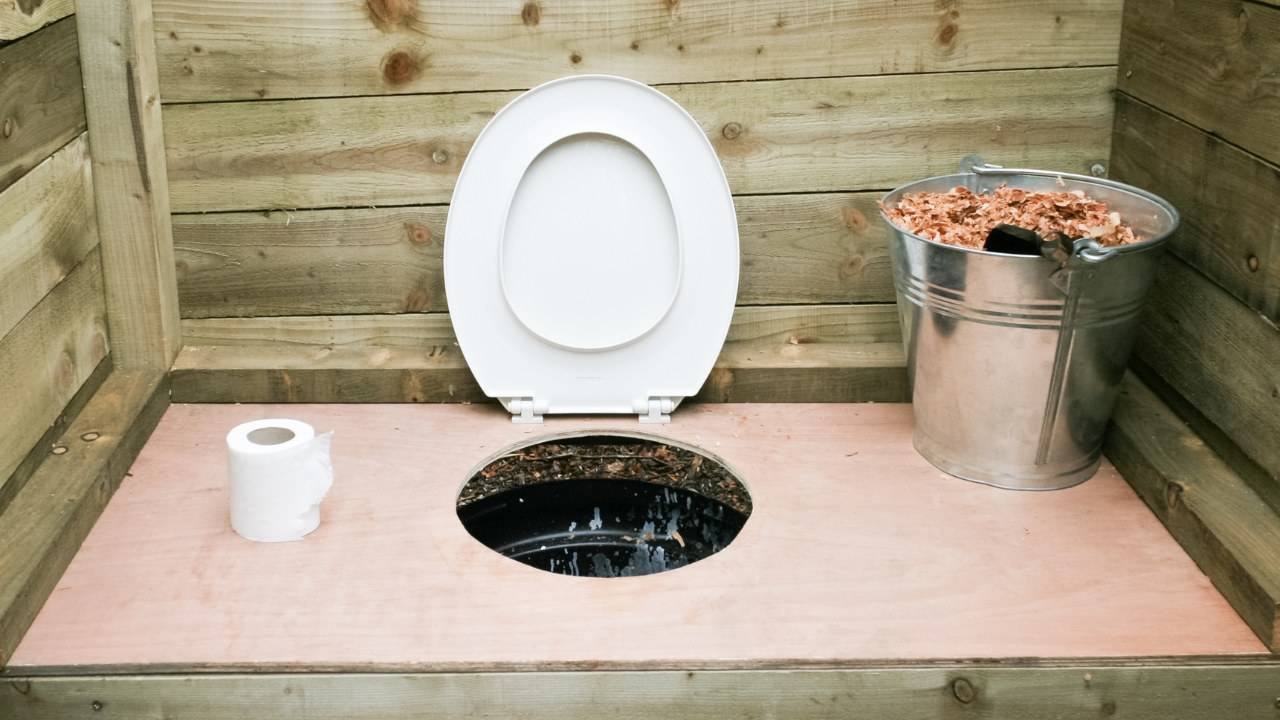An average person flushes the toilet five times a day, which is 1,825 times a year. Each flush uses 2 gallons of water, which is 3,650 gallons of water per year wasted. What’s the best way to avoid this waste? Composting toilets.
When someone says composting toilet, does your mind go to overused, under-maintained, smelly public toilets on a roadside stop or national park? Mine did too. But there’s more than one kind of composting toilet.
Nowadays, composting toilets have an easy-to-use waterless system; they don’t smell, and you can use toilet paper as usual. These are dry toilets, which means no water is wasted. Plus, you can use compost for fertilizing your plants. Here’s a complete guide on what are composting toilets, how do composting toilets work, and how to maintain them.
What Is A Composting Toilet?
Composting is a natural process where organic matter is recycled into a fertilizer and soil conditioner. A composting toilet is a device that turns human waste into compost. This toilet creates an oxygen-rich environment that enables aerobic bacteria to break down waste.
Most composting toilets are dry systems, which means they don’t use water for flushing. You usually have to add a carbon additive to the composting toilet design, such as sawdust, peat moss, or coconut coir. This creates air pockets in the waste, which leads to aerobic decomposition. It also reduces odor.

The end product resembles humus and can be used to enrich the soil. Some composting toilets have one container, but many have urine diversion systems in the bowl. This system collects urine separately and controls excess moisture.
Composting toilets don’t need to be connected to a septic tank or a sewer system, like regular flush toilets. Some have fans; some don’t. Some need to be plugged in, and others can be used completely off-grid.
Types of Composting Toilets
Before I get into exactly how composting toilets work, here are different kinds of composting toilets.
1. Self-Contained
Self-contained composting toilets are what most people think of when composting toilets come up. These toilets compost waste in an enclosed system. They have detachable tanks and bins used to dispose of liquid and solid waste.
These toilets are usually made of tough polypropylene, so they are easy to clean. Liquid can be contained or drained away, and solid waste composting is done in a container with peat moss or a similar material.
Self-contained toilets are a great choice for RVs, boats, and cabins because it’s easy to empty the bin. Just dump the compost onto a compost heap or a compostable bag for disposal. They can also be fitted in basements, garages, and guest accommodations where regular plumbing is difficult.
Finally, these composting toilets usually have a vent to expel gases and are often fan assisted.
2. Split or Central System
A split or central composting toilet is similar to a flush toilet. It uses a pipe system that directs waste to a tank or a hopper, which creates compost away from the toilet. Essentially, this is as close to a usual bathroom experience as you can get with a composting toilet.
The bathroom is connected to a central collection, which comes in the form of a tank or a drum and is installed below or next to the toilet level. The main drawback is that it’s not practical to install these toilets outside because the tank needs to stay warm for effective composting.
The installation of a central system composting toilet is complex and more expensive than self-contained ones. You should also check the local building codes before buying one.
But, on a positive note, gravity takes care of the waste when the tank is below the toilet. Also, you can connect several toilets to this system as they have a greater waste capacity and don’t need to be emptied often.
How Does a Composting Toilet Work?
A composting toilet works similarly to a standard flush toilet. Most toilets are designed in a way that must be sat on, so urine and feces are directed into the toilet system. You need to add a carbon-rich material to add a mix of basic chemicals to break down the waste. The broken-down material can be used as compost.
Keep in mind composting toilets vary. They have different storage capacities and different composting speeds, and compost quantity varies based on the toilet design, air temperature, number of users, and size of the toilet.
Processes That Take Place in a Composting Unit Below the Toilet Bowl
A composting toilet can be a:
- Dehydration Toilet — Uses heat to dry fecal matter
- Composting System — Microorganisms break down the organic matter and produce heat, water, and carbon dioxide.
A composting system toilet is more complex than a dehydration one. Here’s which microorganisms you need:
- Actinomycetes — Similar to mold and fungi. They break down protein, cellulose, and starch and produce an earthy smell in compost.
- Fungi — Mostly yeast and mold. They break down tough debris into small pieces.
- Thermophilic Aerobic Bacteria — Thrives at high temperatures. They break down waste in toilets because of the heat.

Overall, composting processes in the toilet bowl go through a massive reduction through evaporation, mineralization, and digestion, which allows for the storage of waste in the container. By-products that occur are water, heat, and dioxide.
How Does Solid Waste Get Decomposed?
In urine-diverting dry toilets, there are two separate containers: one for liquid (in the front) and one for solid (in the back). The waste drops through a mechanized hatch into the appropriate container. There’s a container or a biodegradable bag filled with carbon-rich materials, such as sphagnum, peat moss, or coconut hawks. The bag keeps the feces separate from urine.
You turn on a mechanical crank to agitate and mix the materials and start the composting process. You need to use additives to increase the carbon-to-nitrogen ratio. Solid waste dries in the composting toilet thanks to leachate management, which controls moisture levels.
Finally, you need aeration for solid waste to be composted. Some systems have ventilation that moves the air from the bathroom through the waste container into a vertical pipe. Other units require periodic aeration of the solid mass by rotating the composting container or pulling an aerator rake through the waste.
How Does Urine Get Decomposed?
In a composting toilet where liquids are separate from solids, urine is collected in a container and disposed of when the container becomes full. A urine container is usually smaller than a feces container and, depending on how many people use the toilet, needs to be emptied once a day.
Urine drops through a mechanized hatch into a container that has carbon-rich materials.
In case there’s one bucket for all waste, urine is piped out as black water and joins the grey water system.
You can dilute urine with water and use it as a fertilizer for plants and trees. Don’t worry about the smell, as there’s none.
Construction of a Composting Toilet that Enables Composting
A composting toilet can be made above or below ground level, inside a structure, or have a separate superstructure. It has a drainage system that removes leachate or two separate containers for urine and feces.
The composting chamber needs to be insulated to stay warm, and the composting process is protected from low temperatures. As long as there’s an optimal temperature, the composting process won’t slow down.
How Does a Composting Toilet Tackle the Odor Issue?
The composting toilet takes the odor issue by separating the urine and feces. Sewage smell is created by mixing urine and feces together. But, when separate, they smell a lot less. This is why composting toilers can smell better than regular ones.
Bacteria work quickly in a composting toilet and break down the waste. Organic matter, most commonly sawdust, suppresses the odor while the microbes work. Also, it helps that the waste is held in a sealed container.
In units that don’t separate feces and urine, ventilation helps. Fan ventilation pulls air into the toilet, dries the waste, and vents gases from the system.
In case there is an odor, it isn’t unpleasant but resembles mulch, wood, or damp leaves.

How To Maintain A Composting Toilet
Unlike a regular, water-based system, a composting toilet isn’t flush and forget. It requires work but isn’t as onerous as you may believe.
A central compost toilet can run for up to six months or more before it needs emptying. The emptying of a self-contained toilet depends on its size and is usually between four to twelve weeks.
Note: There’s a common misconception that it’s against the law to place human waste in the trash. While this is true for raw sewage, it’s not true for treated material out of a composting toilet, so you can dispose of waste from the compost toilet with your regular trash.
Here’s how to maintain an outhouse composting toilet:
- Reset the toilet once a month if three people use it. Make sure to disconnect the toilet from the exhaust system first when resetting. Crumble coconut coir into small pieces. There’s no need to make them too small, as they’ll crumble on their own later. Once you fill-up the container halfway, add up the compost starter.
- “Flush” the toilet with a spray bottle filled with half vinegar and half water. Spritz the toilet bowl after use.
- If your composting toilet separates urine, you need to empty and wash out the container. How often you do it depends on the unit’s size and use frequency.
- If your composting toilet separates urine, you need to empty and wash out the container. How often you do it depends on the unit’s size and use frequency.
- You must remove compost from the system regularly. Bag the compost, place it in the garbage, or use it as fertilizer. Make sure your solids aren’t soupy or won’t turn into compost.
- If your container has filters (to keep the bugs out), wash them with soap and water, dry them, and put them back in.
- Wipe the outside of the waste container.
- Disinfect the toilet seat.
Don’t empty the urine container on rocks and concrete because it’ll stink until it rains. Pour into bushes, trees, and plants.
Can You Use Human Waste For Gardening?
Using human waste for gardening is a hotly debated topic. Critics are against using humanure for edible plants because it can contain pharmaceuticals and pathogens.
However, if you’re only using your family’s waste and hot composting practices, pathogens and diseases will be killed off during the composting process, and the compost is safe to use.
Overall, human waste is rich in plant-healthy nutrients, so it’s ideal for growing crops.
But don’t use waste compost to grow food if it’s been composting for less than six months. We have medications, viruses, and pathogens in our bodies that end up in waste, and you can have chemical additives in your organic fruits and veggies.
Make sure the waste has been composting for at least six months (ideally six to twelve). Once it’s composted, the waste breaks down into nitrogen-rich compost plants can use for growth. You can use this compost on trees and shrubs.
Here’s how to use human waste for gardening:
- Know the source of the waste — You shouldn’t use just anyone’s poop. Stick to your family’s waste. By knowing the source of the waste, you won’t contaminate your compost with medicine.
- Add dry carbon —You want a mix between carbon and nitrogen for the best results. Use dry leaves, plant trimmings, pine needles, and others. Ideally, you’ll have more carbon than nitrogen.
- Make a big enough pile — Your compost pile needs to be warm, so you should have compost heat that’s 3x3 in wide and 5 in high.
- Let it sit for 6 to 12 months — Fill one compost bin and let it sit until the next bin is full. This works for a family of four.
Frequently Asked Questions (FAQ)
How often you empty a composting toilet depends on the size of the compost container and how many people use the toilet. You can empty the solid waste container every few weeks or every few months. Empty the urine container every day.
The drawbacks of a composting toilet are:
- Manual waste removal
- More maintenance than regular toilets
- Smaller toilets have limited capacity and aren’t suitable for larger amounts of waste
- Poorly installed systems can lead to odors, unprocessed waste, health hazards, and insects.
No, composting toilets don’t smell. Urine and feces don’t smell strong when not mixed together. Most composting toilets have ventilation systems that pull air down into the toilet and expel it outside of the toilet.
The toilet paper goes in the solid waste container in a composting toilet. It mixes with solid waste and becomes compost. Some people choose to place toilet paper in a separate bin.
You clean a composting toilet by emptying out the urine and solid waste containers as needed. You need to add organic matter into the solid waste container and clean the filters.
You drain a composting toilet by installing a drainage system for liquids.
How Do Compostable Toilets Work: Final Thoughts
I hope this gave you a clearer picture of how compost toilets work. Using a compost toilet saves gallons of water yearly. Plus, you can use compost as a fertilizer.
Make sure to use carbon-rich materials to reduce odors and start the composting process. Don’t worry about the smells. Chances are, your composting toilet will smell nicer than a regular one.
Composting toilets are expensive. But there’s no need to shell out $$$$ to get one. Now that you know all about how do compostable toilets work, here’s a guide on how to cheaply and easily build your own composting toilet.


